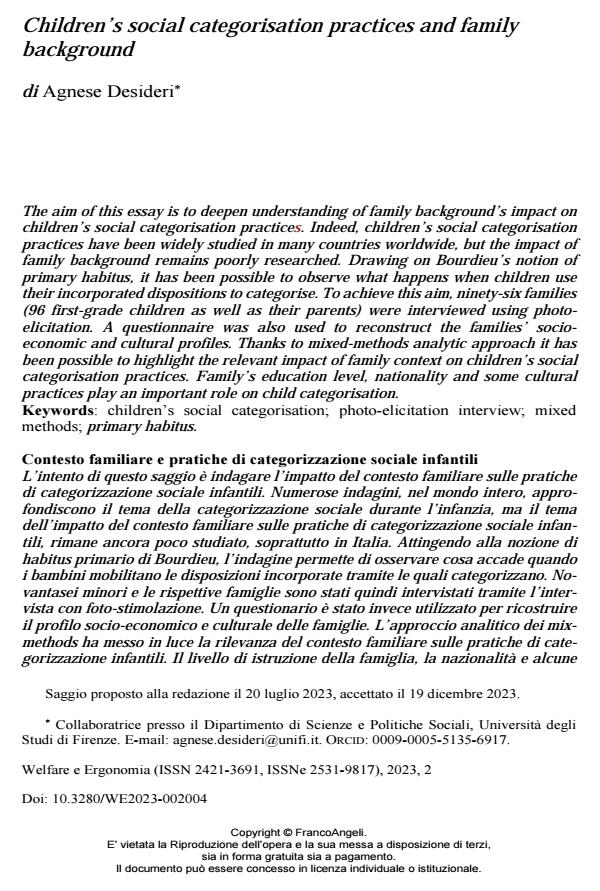Contesto familiare e pratiche di categorizzazione sociale infantili
Journal title WELFARE E ERGONOMIA
Author/s Agnese Desideri
Publishing Year 2024 Issue 2023/2
Language English Pages 14 P. 43-56 File size 219 KB
DOI 10.3280/WE2023-002004
DOI is like a bar code for intellectual property: to have more infomation
click here
Below, you can see the article first page
If you want to buy this article in PDF format, you can do it, following the instructions to buy download credits

FrancoAngeli is member of Publishers International Linking Association, Inc (PILA), a not-for-profit association which run the CrossRef service enabling links to and from online scholarly content.
The aim of this essay is to deepen understanding of family background’s impact on children’s social categorisation practices. Indeed, children’s social categorisation practices have been widely studied in many countries worldwide, but the impact of family background remains poorly researched. Drawing on Bourdieu’s notion of primary habitus, it has been possible to observe what happens when children use their incorporated dispositions to categorise. To achieve this aim, ninety-six families (96 first-grade children as well as their parents) were interviewed using photo-elicitation. A questionnaire was also used to reconstruct the families’ socio-economic and cultural profiles. Thanks to mixed-methods analytic approach it has been possible to highlight the relevant impact of family context on children’s social categorisation practices. Family’s education level, nationality and some cultural practices play an important role on child categorisation.
Keywords: children’s social categorisation; photo-elicitation interview; mixed methods; primary habitus.
Agnese Desideri, Children’s social categorisation practices and family background in "WELFARE E ERGONOMIA" 2/2023, pp 43-56, DOI: 10.3280/WE2023-002004